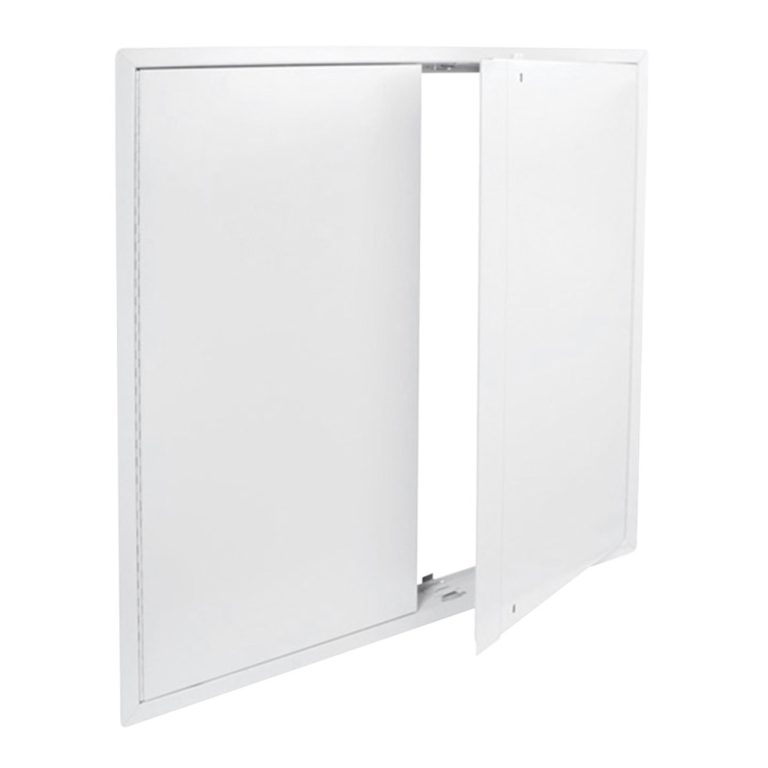If you’re an HVAC professional, building manager, or contractor, you know the constant challenge to make commercial building systems run perfectly. Top-notch equipment, precise setup, and regular maintenance are all key.
But there’s one part that’s easy to overlook —even though it supports all of the above: the HVAC access door.
These doors are essential to a system’s long-term health. They provide fast, secure, and sealed entry to important parts. This directly impacts energy efficiency, operating costs, and air quality inside commercial buildings.
This post discusses why HVAC doors are important and what to look for when choosing the right access solution.
5 Ways HVAC Access Doors Enhance Long-Term HVAC Efficiency
An HVAC access door plays an important role in preserving the integrity of HVAC systems and ensuring they function well long-term. Here’s why it’s necessary.
1. Improves Routine HVAC Maintenance Through Easy Access
With easy access, routine maintenance of HVAC systems becomes easy. HVAC access doors make this possible.
They provide a clear entryway to key components like coils, filters, dampers, fans, and heat exchangers when placed strategically. This access reduces the time technicians spend fixing HVAC issues.
Maintenance stops feeling like a chore, inspiring regular, proactive checks. Increased maintenance helps catch small issues before they become big, expensive repairs, keeping the system running at its best for longer.
2. Reduces Energy Waste
Air leakage is one of the biggest hidden reasons for wasted energy in commercial HVAC systems. If access points in ducts or air handling units lack proper seals, conditioned air escapes, or unconditioned air sneaks in.
As a result, the system works harder and uses more energy to keep the building at the right temperature.
High-quality HVAC access doors with features like foam gaskets create an airtight barrier that prevents air leakage, avoiding the loss of heating or cooling energy.
Insulation also helps maintain the HVAC system’s thermal efficiency, reducing energy wastage and maintaining a consistent building temperature. In addition, it enhances acoustic performance, keeping buildings quieter and more comfortable.
The savings from well-sealed and insulated HVAC access solutions can be significant for commercial buildings with huge energy bills.
3. Improves Indoor Air Quality
When HVAC systems are properly maintained, they do more than save money and time— they also contribute to better air quality.
Easy access contributes to the regular cleaning of coils, filters, and duct interiors. The cleaning stops dust, mould, allergens, and other contaminants from building up and circulating throughout the building.
Additionally, sealed, well-installed access doors prevent outside contaminants from entering the HVAC system. These measures ensure the air inside is as clean and healthy as possible.
4. Maximises Technician Efficiency During Service Calls
When access is quick and clear, technicians can focus on their skills. They can prioritise diagnosing, fixing, or maintaining the system rather than struggling with sticky doors that won’t open and other barriers.
This shortens the time of service calls and improves the quality of work.
A well-placed access point ensures professionalism overall. It helps reduce the work technicians do and keeps clients happy.
5. Minimises Downtime
HVAC downtime can range from a minor annoyance to a huge financial problem. It can mean lost income or disrupted work for commercial building managers or owners.
Downtime can affect productivity, tenant comfort, and even sensitive equipment.
HVAC access doors allow technicians to find and fix issues quickly, minimising downtime and keeping businesses running smoothly.
Choosing the Right Features and Location for HVAC Access Panels
Not all HVAC access doors are the same. For HVAC professionals, picking the right features is crucial for getting the best efficiency and meeting building standards. Some features to consider include the following:
- Material: Choose a strong, durable material that can withstand regular use and demanding environmental conditions. Galvanised steel is a popular option as it’s durable and suitable for general use. Stainless steel is great for places with corrosion, and hygiene is critical (like food processing or healthcare).
- Insulation: Access doors with high insulation stop heat from transferring, keeping the system’s temperature steady. The feature is especially important in areas requiring precise temperature control.
- Locking mechanisms: Quick-release latches or cam locks make access doors easy to use. They also ensure security by preventing unauthorised access.
- Safety Compliance: Choosing fire-rated access doors helps meet local building standards for doors in fire-rated walls or ceilings.
- Aesthetic Appeal: Besides functionality and security, consider the door’s final look. Choose an HVAC access door with a clean, modern design that blends seamlessly with the adjacent wall or ceiling.
Installing access doors in the right spots is essential for long-term system performance. Place them at all the important points that need regular checks or service—such as before and after coils, near filters, at bends in ductwork, next to dampers, and around the main fan.
The opening of the access door is also an important consideration. After installing the door, there must be enough clear space around each access panel for technicians to work effectively.
Conclusion
The HVAC access door is vital to making and keeping commercial HVAC systems efficient in the long term. Their impact is remarkable, from simplifying routine maintenance and preserving energy to reducing downtime in commercial spaces.
Installing high-quality, well-placed HVAC access doors is key to providing great value. By focusing on this, you help cut operating costs and make the space more efficient.
In all these ways, high-quality access doors contribute to better performance and a longer lifespan of commercial HVAC systems.


